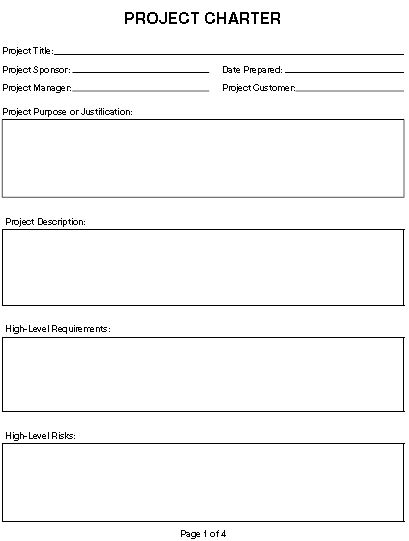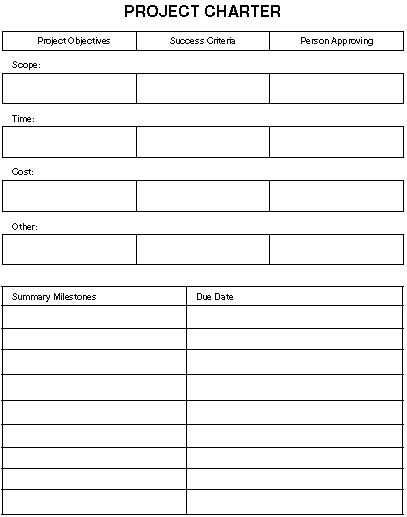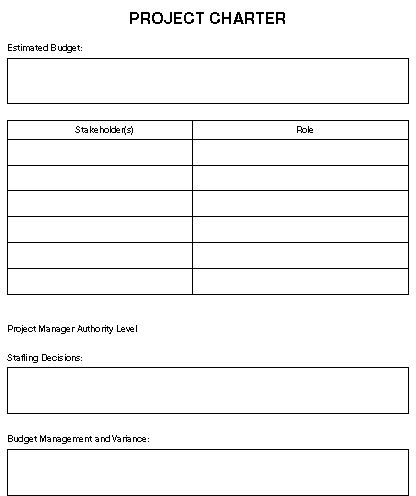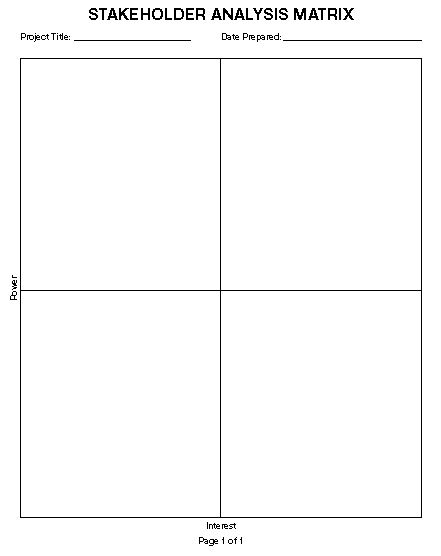01 Project Initiating Forms
Posted by Superadmin on December 19 2015 13:04:02
1.0 INITIATING PROCESS GROUP The purpose of the initiating process group is to authorize a project, provide a high-level definition of the project, and identify stakeholders. There are two processes in the initiating process group:
• Develop Project Charter
• Identify Stakeholders
The intent of the initiating process group is to at least:
• Authorize a project
• Identify project objectives
• Define the initial scope of the project
• Obtain organizational commitment
• Assign a project manager
• Identify project stakeholders
As the first processes in the project, the initiating processes are vital to starting a project effectively. These processes can be revisited throughout the project for validation and elaboration as needed. The forms used to document initiating information include:
• Project Charter
• Stakeholder Register
• Stakeholder Analysis Matrix
1.1 PROJECT CHARTER The project charter is a document that formally authorizes a project or phase. The project charter defi nes the reason for the project and assigns a project manager and his or her authority level for the project. The contents of the charter describe the project in high-level terms, such as:
• Project purpose or justification
• High-level project description
• High-level requirements
• Project objectives and related success criteria
• High-level risks
• Summary milestone schedule
• Summary budget
• Stakeholder list
• Project approval requirements
• Assigned project manager, responsibility, and authority level
• Name and authority of the sponsor or other person(s) authorizing the project charter
Use the information from your project to tailor the form to best meet your needs. The project charter can receive information from:
• Agreements (contracts)
• Statements of work
• Business case It provides information to:
• Stakeholder Register
• Project Management Plan
• Scope Management Plan
• Project Scope Statement
• Requirements Documentation
• Requirements Management Plan
• Requirements Traceability Matrix
• Schedule Management Plan
• Cost Management Plan
• Risk Management Plan
The project charter is an output from the process 4.1 Develop Project Charter in the PMBOK® Guide—Fifth Edition.You can use the element descriptions in Table 1.1 to assist you in developing a project charter.
TABLE 1.1 Elements of a Project Charter






1.2 STAKEHOLDER REGISTER The Stakeholder Register is used to identify those people and organizations impacted by the project and document relevant information about each stakeholder. Relevant information can include:
• Name
• Position in the organization
• Role in the project
• Contact information
• List of stakeholder’s major requirements
• List of stakeholder’s expectations
• Potential influence on the project
• A classification or categorization of each stakeholder
The Stakeholder Register is a dynamic project document. The stakeholders, their level of influence, requirements, and classification are likely to change throughout the project. Initially you will not have enough information to complete the register. As the project gets underway you will gain additional information and understanding about each stakeholder’s requirements, expectations, and influence and the Stakeholder Register will become more robust. Information in the Stakeholder Register should be tailored to meet the needs of the project. For example, some projects may have internal and external stakeholders while others may only have internal stakeholders. The following sample is just one approach to identifying and documenting stakeholder information. The Stakeholder Register receives information from:
• Project charter
• Procurement documents It is related to:
• Stakeholder Analysis Matrix It provides information to:
• Requirements Documentation
• Quality Management Plan
• Communications Management Plan
• Risk Management Plan
• Risk Register
• Stakeholder Management Plan
The Stakeholder Register is an output from the process 13.1 Identify Stakeholders in the PMBOK® Guide— Fifth Edition You can use the element descriptions in Table 1.2 to assist you in developing a Stakeholder Register. 

1.3 STAKEHOLDER ANALYSIS MATRIX The Stakeholder Analysis Matrix is used to classify stakeholders. It can be used to help fill in the Stakeholder Register. The classifications of stakeholders can also be used to plan stakeholder engagement for groups of stakeholders. The following example is used to assess the relative power (high or low) on one axis and the relative interest (high or low) on the other axis. There are many other ways to categorize stakeholders using a grid. Some examples include:
• Infl uence/impact
• Friend/foe
The needs of the project will determine if a Stakeholder Analysis Matrix will be helpful and, if so, what stakeholder aspects should be assessed. Use the information from your project to tailor the form to best meet your needs.
The Stakeholder Analysis Matrix receives information from:
• Project charter
• Procurement documents It is related to:
• Stakeholder Register
The Stakeholder Analysis Matrix is a tool used in 13.1 Identify Stakeholders in the PMBOK® Guide—Fifth Edition. 








